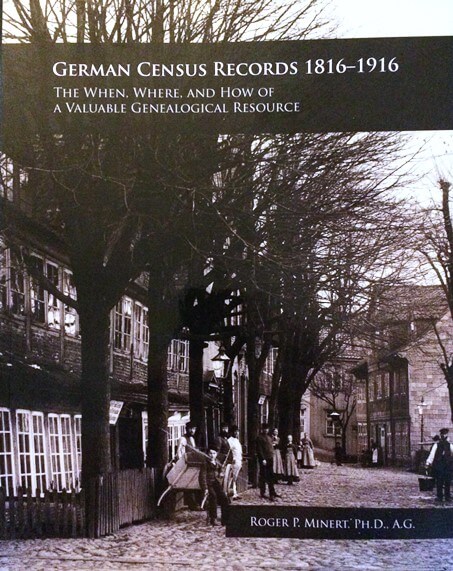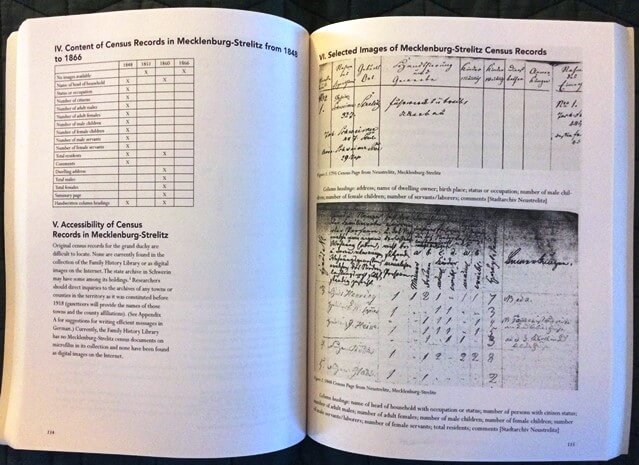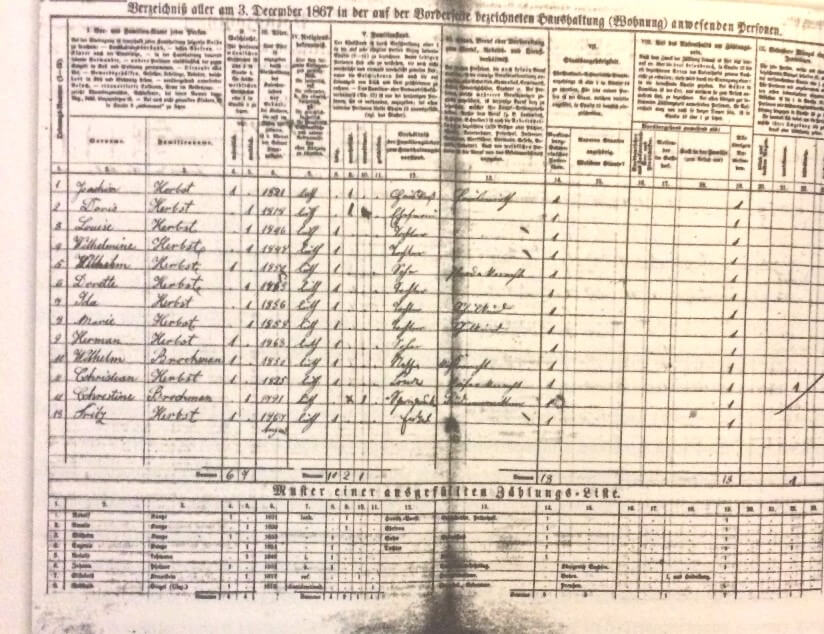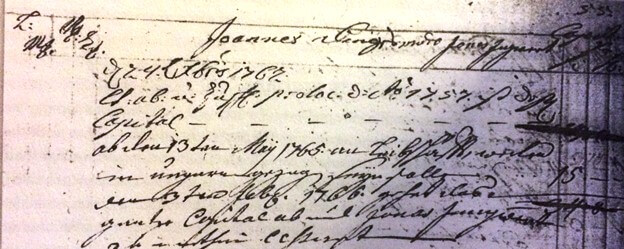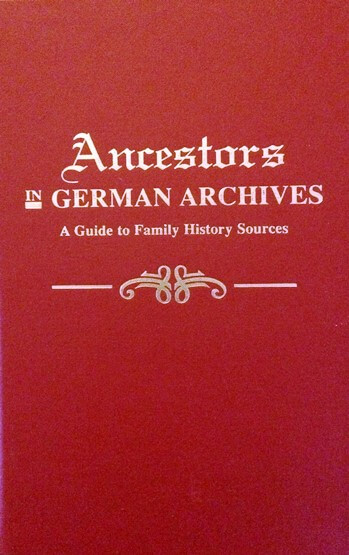Find Canadian Ancestors in Censuses from 1825 to 1921
 If you have Canadian kin, you’ll be pleased to hear that the 1825 census of Lower Canada is now searchable online, and the 1921 census will soon be available online, too!
If you have Canadian kin, you’ll be pleased to hear that the 1825 census of Lower Canada is now searchable online, and the 1921 census will soon be available online, too!
The 1825 census of Lower Canada counted nearly half a million people. Heads of household were actually named, with other members of the household counted by category. You can search by household name or geographic location.
The 1921 census counted 8.8 million people in thousands of communities across Canada. According to the Library and Archives Canada Blog, the population questionnaire had 35 questions. The census also collected data on “agriculture; animals, animal products, fruits not on farms; manufacturing and trading establishments; and [a] supplemental questionnaire for persons who were blind and deaf. This represents a total of 565 questions.” The census was released this past June 1 from the national Statistics office to the Library and Archives. That office is processing and scanning the nearly 200,000 images for public use. It hopes to have them posted soon.
Here’s a sample page from the 1921 census population schedule:
We think of Canada as a real melting pot today—or salad bowl, as they prefer. That wasn’t always the case. The 1825 census of Lower Canada counted mostly Europeans of French extraction. In 1901, 70% of Canadians claimed either British or French heritage. But in the first two decades of the 1900s, a huge immigration boom occurred that reached well beyond England and France. So the folks who show up on the 1921 census represented a newly multicultural Canada!
Start looking for your Canadian ancestors in the Library and Archives Canada’s popular Census Indexes, which include that 1825 census and a new version of the 1891 census, too. Watch the website for the 1921 census.
If your family arrived in Canada after the 1921 census, check out the website for The Canadian Museum of Immigration at Pier 21, where a million immigrants landed between 1928-1971.
New Canadian Genealogy Vital Records & 1851 Census Online
Featured this week are new records for Canada, including the 1851 Canada Census, and BMD for Saskatchewan and Manitoba. Other records include new Irish collections, updated New Zealand birth, marriage, and death collections, new marriage record collections for England, and the launch of the New York State Death Index.

Canadian Genealogy: New Online
Ancestry.com has new collections for Saskatchewan, Canada available online now. These collections include Cemetery Transcripts (1850-1994) and Catholic Baptisms, Marriages, and Burials (1867-1932). These collections are both also available on MyHeritage.

Claire Banton, Library and Archives Canada (LAC)
Also at Ancestry this week are new records for Manitoba, Canada. You can search Baptisms, Marriages, and Burials (1834-1959), and keep in mind that some of the records in this collection pre-date Manitoba’s creation as a province, and, as a result, are from locations that do not exist in present-day Manitoba. Some records may also appear in French. You can also explore Manitoba Census Indexes (1832-1856 & 1870).
The 1851 Canada Census is available now at Findmypast. It contains over 1.3 million records and images for Canada West (Ontario) and Canada East (Quebec), New Brunswick, and Nova Scotia. This collection is also available at MyHeritage, as well as at the Library and Archives Canada (though their search tools may not be quite as robust).
For fabulous quick tips on Canadian research, take a listen to Lisa’s interview with Claire Banton of the Library and Archives Canada (LAC). Available free on the Genealogy Gems Podcast episode #199.
Irish Military & Bank Records
County Cork. A new database of Irish soldiers is now available online: Deserters, acts of heroism, and IRA murders unearthed. According to the site: “The details of some 2,187 people – soldiers and their families – recorded mainly in the registers of Ballincollig Garrison Chapel have been recovered using the registers of baptisms, marriages and burials between 1810 and 1922 now in the safe custody of the RCB Library, and further research using a variety of additional resources have further unlocked their hidden stories.”
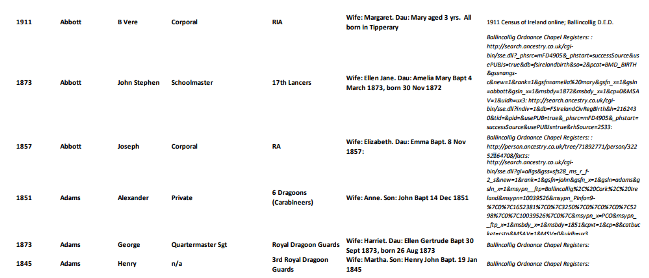
Snippet from a detailed spreadsheet containing information on the 2,187 soldiers and their families recorded in the registers of Ballincollig Garrison Chapel.
Newstalk. The Central Bank of Ireland opens its archives up to the public, including an online catalog. According to a recent article: “The bank says the archives can now be used for public research purposes for the first time. They include a range of materials created and acquired by the bank – such as objects, documents, and ledgers dating from 1786 to 1986.” All materials are open to the public in a dedicated research room, and an online catalog is available to determine what materials may be of interest.
Updated New Zealand Collections
Thousands of records have been added to Findmypast’s collection for New Zealand. Updates include 19,000 added to the Birth Index 1848 onward, 10,000 records added to the Marriage Index 1854 onward, and over 32,000 records added to the Death Index 1848 onward.
British Marriage Records: New Online
It’s wedding bells for Britain! Findmypast has a new collection of Oxfordshire Marriage Bonds 1634-1849 with over 46,000 records. You can also browse the new British Marriage Licenses 1446-1837 collection, where 15 English counties are represented including London, Lancashire, Suffolk, Exeter, Lincoln, Yorkshire, and more. Lastly, explore the thousands of Fleet marriages in Findmypast’s new collection of England Clandestine Marriages 1667-1754 of over 42,000 records.
United States: Newspapers & More
New York. Ancestry.com has just launched a collection of New York State death indexes 1880 to 1956. Ancestry says that “the collection includes more than 5 million names of people who died in New York State.” This death index is available online elsewhere for free, but Ancestry subscribers will appreciate the convenience of searching it on the site.
Colorado. Colorado Virtual Library: “The Colorado Historic Newspapers Collection recently added four new titles; the Brush Lariat (1884-1885), the Morgan County Republican (1912-1920), the Louisville Times (1942-2007), and the Whitehorn News (1897-1907). These four new titles, added by a longtime CHNC partner and two new partners, join 205 titles of historic Colorado newspapers.”
Florida. The Greater North Miami Historical Society had a collection of historical images. Its historical collection dates back to the 1930s and includes over 4,000 negatives, photographs, and other items. *Only a fraction of the material has been put online and the project continues.
Newspapers (Seattle, WA, Boston, MA, & Washington D.C.)
Accessible Archives has announced the completion of additional titles in its African American Newspapers and Women’s Suffrage collections. The five newspapers are now fully imaged and searchable. These tiles range from mid-19th century to early 20th century.
Disclosure: This post contains affiliate links and Genealogy Gems will be compensated if you make a purchase after clicking on these links (at no additional cost to you). Thank you for supporting Genealogy Gems!
Missing Census or Missing Family: Legacy Tree Genealogists Answer
So, you think there might be a missing census page? Whether it’s a missing census or a missing family, my special guest, professional genealogist Kate Eakman from Legacy Tree Genealogists has strategies to help you figure it out. She has just the answers you need to find your ‘missing’ family.
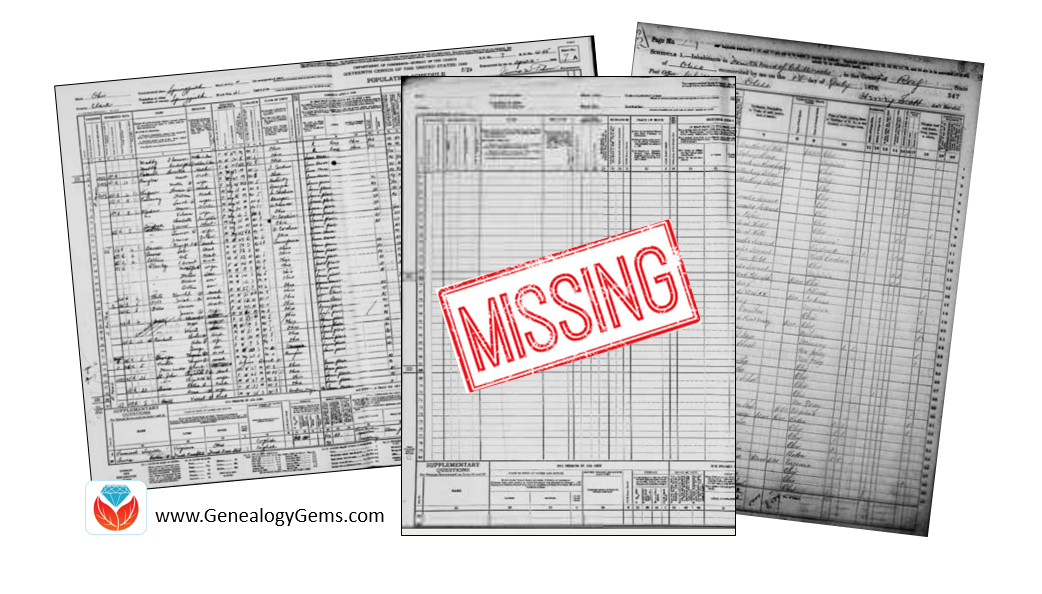
A Genealogy Gems reader doing genealogy research in New Jersey has lost her family! Well not literally, but she can’t find them in the 1940 U.S. Census. Here’s the email I recently received from her:
I am having a problem finding my mother and grandparents in the 1940 census. My grandfather, William Charles Opfer, was born on October 15 1900. I can find him in the 1930 census living in Glouescter Township, (Unincorporated Grenloch) Camden County, New Jersey. He is living with his wife Kathryn (Katharine) Opfer and three children: William C Jr, Robert, and Nancy (my mother).
When I search the 1940 census on Ancestry nothing shows up. So I went to the government web site and converted the 1930 Enumeration District to the 1940 Enumeration District. The 1940 Enumeration Districts were 4-57, 4-58, and 4-61. I then went through all of the pages for each of the districts looking for William C. Opfer. I did this on Ancestry, Family Search, and NARA. No William C. Opfer.
I then went back to the 1930 census and looked at his neighbors. I searched for each of the 13 heads-of-household neighbors from the 1930 census. Two had moved 1940 and I found them. I could not find the other neighbors in the 1940 census. I am wondering if a page from the 1940 census did not get scanned? Is there somewhere else I could look?
Missing Census Answers from Kate Eakman, Legacy Tree Genealogists
First, let me say how impressed I am with this Gem’s research and her dedication to finding this census report. She has made some very thorough searches and performed a number of advanced genealogical techniques in her quest for the 1940 U.S. Census page. It hardly seems fair that all that work didn’t yield the success she surely earned.
The government website she referenced is the National Archives 1940 Census page. The use of the page “1930 Records Search” allowed her to simply locate her grandfather in the 1930 U.S. Census. Then, by clicking a few buttons, discover the corresponding enumeration districts (ED) for the 1930 ED in which he and his family lived: 4-57, 4-58, and 4-61.

I, too, have scrolled through page after page searching for that one elusive name and we know how tedious that task can be! Using three different sites was a good strategy and one that we employ ourselves here at Legacy Tree Genealogists. Different images might be easier or more difficult to read, although in the case of these three EDs, the copies seemed to be uniformly easy to read.
The first two EDs were for Blackwood, an unincorporated part of Camden County, New Jersey. The third one was for the Lakeland Tuberculosis Hospital, unlikely to have housed the entire family, but certainly worth looking through in case one Opfer was a patient there.
ED 4-58 had an interesting variation at the end of the report. The last two pages were not 15A and 15B, as would be expected, but were 61A and 61B. This indicates these households were enumerated at a later date than were their neighbors. Because federal law requires every household to be counted, and because not everyone was at home when the enumerator arrived, the enumerator had to return on a different day and attempt to gather the necessary information for those families. They were recorded separately, beginning with page 61A.
People living in hotels, trailer camps, and other places normally designed for single-night stays were enumerated a week after the initial enumeration and those pages are numbered beginning with 81A. Not every ED has a 61 or an 81 page, but if you see one, now you know why the page numbers suddenly changed so dramatically.
The writer’s use of Elizabeth Shown Mills’ FAN Club was an excellent idea, too. FAN, an acronym for Friends, Associates, and Neighbors, takes advantage of the fact that people, in general, tend to remain geographically close to the people they know. [Read more about this in our post, “The Genealogy FAN Club Principle Overcomes Genealogy Brick Walls“] If a portion of a community moves, they tend to move together and relocate in the same general area of their new location. Her instincts to use this tool were excellent, even if they did not produce the desired results. This falls under the heading of “reasonably exhaustive research” and should always be included when someone, or in this case something, can’t be found, but should be there.
The fact that the researcher was able to locate only two of those neighbors could be explained, in part, by the fact that so many were in their 60s, 70s, and even 90s in 1930. They simply may have passed away in the intervening ten years. Another explanation, particularly for the working families, is that the Great Depression caused many families to move in order to find employment.
This may have been true for the Opfers. We noticed in 1930, William was employed as a supervisor for Reading Transportation. While supervisors were important to the operation of any transportation company, it is possible William found himself unemployed, as was true for millions of other Americans. If that happened, he and his family could have moved anywhere in the United States in an effort to find work. Alternatively, William may have left to find work while Kathryn and the children lived by themselves in reduced circumstances, or with family or friends.
To this end, I searched for William and Kathryn, and then each of the three children individually, in the hope of locating one or more family members. Using the “less is more” strategy which is often an important part of genealogical research, I searched with and without the family members’ ages, places of birth, and other family member’s names. Because the surname “Opfer” might have been misheard by the enumerator or grossly misspelled, I even searched for the various members of the family with no surname. Since we did not know where the family may have lived between 1930 and 1944, we included all of New Jersey, Delaware (the home state of Kathryn), as well as neighboring Pennsylvania and New York in our searches. The lack of positive results meant we needed to expand our search to the Eastern seaboard, and then the entire United States.
We also identified the names of William’s and Kathryn’s parents, William and Sallie Opfer and Raymond and Corrine Mason, and searched their households and neighborhoods for William and Kathryn. They were not there. Walter, William’s younger brother, was not hosting the family, either.
The writer had asked if it was possible that a page from the 1940 U.S. Census did not get scanned. Since the 1940 census has only been available for four years, it is still possible, although not probable, that there are one or more pages missing unbeknownst to anyone. Our research revealed only a few pages from a couple EDs in Ohio and South Dakota that were missing from the FamilySearch collection. There is no indication anywhere that there are missing pages from New Jersey. In addition, the pages in the three possible EDs for the Opfers were all included and in the correct numerical order, with no indication of any missing pages at the end. Therefore, I think we must conclude that missing pages do not explain the Opfer family’s disappearance.
Other Databases to Help
There are two other databases which might provide some insight into the location of the Opfer family. The first is the set of 1942 World War II draft registration cards. All men between the ages of 18 and 65 were required to register for this draft. The draft registration cards would have included the address at which William lived in 1942; however, there was no card for a man named William Opfer (or with only the surname “Opfer”) born between 1895 and 1905.
The final search was the database of city directories. A poorly-indexed city directory reported the Opfers lived in Haddonfield, New Jersey in 1943, but there are two directories contained in the same book, and the listing was actually for 1947. It reported William and Katherine lived at 209 Washington Avenue with their children William and his wife, Robert, and Nancy. William’s brother, Walter, and his wife Edith lived nearby. Unfortunately, the search for them in 1940 revealed that 79-year-old widower William Pape lived at that address with his household servants who were not the Opfer’s.
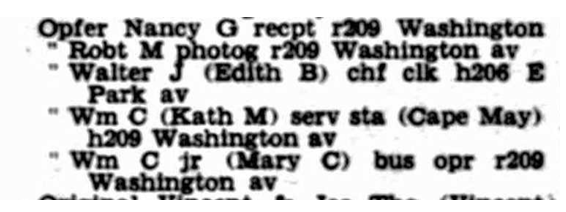
The William Opfer family in Haddonfield, New Jersey in 1947.Photo courtesy Ancestry.
Although the turmoil and upheaval of the Great Depression meant families were scattered, and it would have been easy to miss enumerating many households in the mid-1930s, by 1940 the U.S. was recovering from the effects of the Depression. Some agencies, such as the Works Progress Administration (WPA) and the CCC (Civilian Conservation Corps), were in place to provide work for men. Many war-related industries on both coasts were revived by the Allies’ efforts to stop Hitler.
In other words, there should have been work and stability for the Opfer family by 1940, and they ought to have appeared in a census report. The evidence of the 1930 census and the 1947 city directory strongly suggest they remained in or close to New Jersey, but all of the efforts to locate them have failed to yield positive results.
One Last Scenario
One possible scenario which would explain the Opfers apparent absence from the 1940 census is a simple one: perhaps the family was in the process of moving from one location to another in the month of April when the census was enumerated. Although the census was supposed to be enumerated on 1 April, the reality is that it was simply impossible to knock on every door and obtain the necessary information in one day. Some enumeration districts were fully counted by the 4th of the month. Other places were not completed until the 30th. This was true even in the same town.
If the Opfers had moved across the street from 206 Washington Avenue to 209 Washington Avenue in Haddonfield, for instance, between the 5th and the 14th of April, they would have moved from one enumeration district to another. Because the 209 Washington Avenue address had been enumerated on 4 April, they would not have been counted in that new location. And, because the 206 Washington Avenue address was not enumerated until the 15th of the month, they would not have been included in that EDs census report. We have seen this happen in the reverse and a family was enumerated twice because they moved during the enumeration, so it certainly could have happened the other way around. This is the only explanation we can find to explain the absence of the Opfers from the 1940 U.S. Census.
More About Kate Eakman at Legacy Tree Genealogists and SAVE $100!
 Kate Eakman grew up hearing Civil War stories at her father’s knee and fell in love with history and genealogy at an early age. With a master’s degree in history and over 20 years experience as a genealogist, Kate has worked her magic on hundreds of family trees and narratives.
Kate Eakman grew up hearing Civil War stories at her father’s knee and fell in love with history and genealogy at an early age. With a master’s degree in history and over 20 years experience as a genealogist, Kate has worked her magic on hundreds of family trees and narratives.
Areas of expertise:
-Native American Genealogy
-U.S. Civil War & Victorian America
-Narrative Biographies
-Irish Genealogy
The team of expert genealogists at Legacy Tree Genealogists can help bust through your brick walls. They do the research and you enjoy the discoveries!
German Census Records DO Exist
For a long time, German census records were thought not to exist. But they do! A leading German genealogy expert tells us how they’ve been discovered and catalogued—and where you can learn about German census records that may mention your family.
Thanks to James M. Beidler for contributing this guest article. Read more below about him and the free classes he’ll be teaching in the Genealogy Gems booth at RootsTech 2018 in a few short weeks.
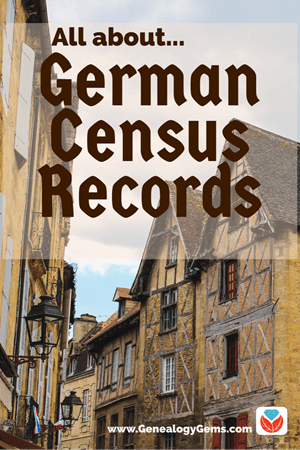
German census records DO exist
One of the truisms of researching ancestors in America is that the U.S. Census is a set of records that virtually every genealogist needs to use.
From its once-a-decade regularity to its easy accessibility, and the high percentage of survival to the present day, the U.S. Census helps researchers put together family groups across the centuries.
On the other hand, the thing that’s most distinctive about German census records is that for many years they were thought not to even exist.
For Exhibit A, look at this quote from a book published just a few years ago: “Most of the censuses that were taken have survived in purely statistical form, often with little information about individuals. There are relatively few censuses that are useful to genealogists.”
The book from which the above statement was taken is The Family Tree German Genealogy Guide. And the author of that book is … uh, well … me!
In my defense, this had been said by many specialists in German genealogy. The roots of this statement came from the honest assessment that Germany, which was a constellation of small states until the late 1700s and not a unified nation until 1871 when the Second German Empire was inaugurated, had few truly national records as a result of this history of disunity.
As with many situations in genealogy, we all can be victims of our own assumptions. The assumption here was that because it sounded right that Germany’s fractured, nonlinear history had produced so few other national records, those census records didn’t exist.
A few census records from northern German states (see below) had been microfilmed by the Family History Library, but for all intents and purposes, a greater understanding of the “lost” German census records had to wait for a project spearheaded by Roger P. Minert, the Brigham Young University professor who is one of the German genealogy world’s true scholars.
Finding lost and scattered German census records
It can be said that Brigham Young University professor Roger Minert “wrote the book” on the German census. That’s because he literally did: German Census Records, 1816-1916: The When, Where, and How of a Valuable Genealogical Resource. A sample page is shown below.
Minert had a team help him get the project rolling by writing to archivists in Germany before he took a six-month sabbatical in Europe. During this time, he scoured repositories for samples of their German census holdings (To some extent, Minert’s project had echoes of an earlier work led by Raymond S. Wright III that produced Ancestors in German Archives: A Guide to Family History Sources).
What resulted from Minert’s project was the census book and a wealth of previously unknown information about German censuses.
While a few censuses date to the 18th century in the German states (some are called Burgerbücher, German for “citizen books”), Minert found that the initiation of customs unions during the German Confederation period beginning after Napoleon in 1815 was when many areas of Germany began censuses.
The customs unions (the German word is Zollverein) needed a fair way to distribute income and expenses among member states, and population was that way. But to distribute by population, a census was needed to keep count, and most every German state began to take a census by 1834.
Until 1867, the type of information collected from one German state to another varied considerably. Many named just the head of the household, while others provided everyone’s names. Some include information about religion, occupation and homeownership.
The year 1867 was a teeter-totter point Minert calls it “for all practical purposes the first national census.” Prussia—by then the dominant German state and whose king would become the emperor just a few years hence—spearheaded the census effort.
After the founding of the Second German Empire, a census was taken every five years (1875 – 1916, the last census being delayed by World War I). While there was some variance in data from one census to another, they all included the following data points:
- names of each individual,
- gender,
- birth (year and, later, specific dates),
- marital status,
- religion,
- occupation,
- citizenship,
- and permanent place of residence (if different from where they were found in the census).
While some of these censuses are found in regional archives within today’s German states, in many cases the census rolls were kept locally and only statistics were forwarded to more central locations.
Interestingly, there has been a lack of awareness even among German archivists that their repositories have these types of records! Minert says in his book that in three incidences, archivists told him their holdings included no census records, only to be proved wrong in short order.
Minert’s book goes through the old German Empire state by state and analyzes where researchers are likely to find censuses. For each state, there is also a chart on the pre-Empire censuses and what information they included.
Researchers wishing to access these records will often need to contact local archives. If you’ve uncovered a village of origin for an immigrant, you could contact them directly by searching for a website for the town, then emailing to ask (politely but firmly) whether the archives has census records.
FamilySearch has placed online German census records for Mecklenburg-Schwerin (1867, 1890 and 1900; the one shown below is from 1867).
The Danish National Archives has some census records online for Schleswig-Holstein (much of the area was Danish until they lost a war with Prussia in 1864).
Other Census-Like Lists
In addition to these censuses, many areas of Germany have survivals of tax lists that serve as a record substitute with some data points that are similar to censuses. The lists generally show the name of the taxpayer and the amount of tax paid.
In some cases, versions of the lists that include the basis for the tax (usually the value of an interest in real or personal property) have survived. The lists may also include notes about emigration. Here’s a sample tax record from Steinwenden Pfalz.
Some of these tax lists are available in the Family History Library system.
The best “clearinghouse” that reports the holdings of various repositories in Germany is Wright’s Ancestors in German Archives. As with the census records, the best way to contact local archives directly would be to search for a website for the town. E-mail to ask whether such lists are kept in a local archive.
In my personal research, tax records have proved crucial. For example, they confirmed the emigration of my ancestor Johannes Dinius in the Palatine town of Steinwenden. These records showed the family had left the area a few months before Dinius’ 1765 arrival in America.
James M Beidler is the author of The Family Tree German Genealogy Guide and Trace Your German Roots Online.
Disclosure: This article contains affiliate links and Genealogy Gems will be compensated if you make a purchase after clicking on these links (at no additional cost to you). Thank you for supporting Genealogy Gems


